David Stockman On Why The Houthis Aren't America's Problem
Authored by David Stockman via InternationalMan.cm,
The ascension to NATO of the Balkan Five (Croatia, Slovenia, Macedonia, Montenegro and Albania) and the Baltic Three (Lithuania, Latvia and Estonia) amounts to some kind of bad joke. Their combined active military forces total just 66,000 servicemen, which is exactly equal to the combined 66,000 man police forces of New York City, Chicago, Los Angeles and Philadelphia.

Likewise, their combined defense budgets are $8 billion annually or about the level of Pentagon spending every seven hours, including weekends, holidays, snow days and the Fourth of July parades, military bands and all. And when it comes to economic heft, their collective GDP is a diminutive $350 billion or just 1.3% of that of the USA.
So we rightly asked, why bother? Their military manpower, token defense budgets and rounding error GDPs do not have even remote relevance to standing up America’s triad strategic nuclear deterrent, which doesn’t require any foreign bases or allies in any case. Nor do they contribute a whit to an invincible conventional military Fortress America defense of the airspace and shorelines of the US homeland way over here on the far side of the Atlantic and Pacific Ocean moats.
And yet and yet. The wee countries of Eastern European NATO actually have some modest throw-weight compared to what’s involved in the raging Yemen bombing leak controversy at the top of today’s the news. Of course, the controversy is all about the leak of what practically amounts to a scheduled bombing run against a tiny spec of an “enemy” on the Red Sea coast. But the far more important question is why in the hell was the Donald bombing the bedraggled Houthi installations in the first place?
Or as Ann Coulter expressed it more colorfully,
…because right now, his foreign policy team is looking like John Bolton without the ridiculous Wilford Brimley mustache. Since Trump keeps hiring these people, it’s a good time to remind him that, in 2016, he won more primary votes than any Republican in U.S. history (as well as the election) by saying things like this about a war that had a million more justifications than his recent bombing of the Houthis:
“Obviously, the war in Iraq was a big, fat mistake. … We spent $2 trillion, thousands of lives … George Bush made a mistake. We can make mistakes. But that one was a beauty. We should have never been in Iraq. We have destabilized the Middle East.”
So why does Trump keep surrounding himself with tinhorn cowboys who think it’s America’s responsibility to drone, bomb, invade and occupy other countries whenever and for whatever reason they want?
As it happens, the Houthi tribes– who profess a variant of Shiite Islam—have dominated much of northern and western Yemen for centuries. They generally ruled North Yemen during the long expanse after it was established in 1918 until the two Yemen’s were reunified in 1990.
So when a Washington installed government in Sana’a was overthrown and the uneasily unified nation of Yemen disintegrated into warring religious factions, the Houthi took power in northern Yemen, while Sunni tribes aligned with the Muslim Brotherhood and al-Qaeda held sway in the south. And these latter folks are far worse on the terrorist scale than the Houthi ever dreamed of being.
Needless to say, this Houthi remnant of the failed state of Yemen ain’t no threat to nobody who’s minding their own business. They have no blue water Navy, no Air Force, no regular Army and just some odds and sots of coastal patrol boats and short range drones and missiles. So their ability to inflict even a scratch on the American homeland way over here lies somewhere between slim and none.
As indicated, the Houthis rule not the entire sovereign country of Yemen, but roughly 25% of the former Yemen territory (about 137,500 square kilometers out of 550,000), including the capital at Sana’a and key northern population centers. Given that the GDP of the entirety of the Yemen territory was a scant $20 billion in 2024 and that slightly more of the economic activity—now often barter-based after years of USA and Saudi bombing—is under Houthis control, our trusty AI, Grok 3, estimates that in their wisdom the Donald’s purported America Firsters were bombing the shit out of some desert salients which generate a mere $6-8 billion of GDP annually.
That’s right. We are talking about a rogue regime of rifle-waving ruffians who control the equivalent of 1oo minutes of US GDP!

And, no, ensuring the freedom of navigation in the Red Sea doesn’t have a damn thing to do with it. Thus, in 2023, about 8.7 million barrels per day (b/d) of crude oil and refined products flowed through the Bab el-Mandeb Strait (southern Red Sea entrance), but almost all of that went to Europe. And the tiny 500,000 barrels per day of Persian Gulf oil that went to the US (1% of US energy consumption) could be readily replaced by domestic production anyway under the Donald’s drill, baby drill policy.
When it comes to the oil trade through the Red Sea/Suez route, therefore, we are basically talking about profits to the Petro-State producers and costs to European consumers—not anything remotely related to the national security of the American homeland.
Likewise, the containership trade is even more irrelevant. The overwhelming share of US destined goods from China, South Korea, Taiwan or elsewhere in the Far East (upwards of $600 billion per year) arrive here via the Pacific Coast and Panama Canal routes to eastern USA, not the Red Sea/Suez route. By contrast, upwards of 75% of the $1 trillion of containership cargo transiting the latter route, goes to Europe.
Moreover, in the event that the modest amount of US bound container cargo is diverted to the Cape of Africa route the incremental cost to the US east coast is barely material: At current market levels, the price per TEU is about $264 for the Red Sea-Suez route and $292 for the Cape route, again according to Grok 3.
In short, there is no economic case for attempting to bomb the Red Sea into freedom of navigation. And surely there is no basis for claiming that the Houthi, who are a rag-tag tribe of desert insurgents, are a threat to the liberty and security of the American homeland in any way, shape or form.
After all, even their Iran-supplied missiles have a maximum range of well less than 1,200 kilometers. Yet the last time we checked, the distance from Yemen to Washington DC was 11,000 kilometers!
So to repeat the mantra that could not be more pertinent to the Donald’s inchoate attempt to bring the Empire home: America must not go abroad seeking monsters to destroy, as our sixth president, John Qunicy Adams, stated so cogently nearly 204 years ago on Independence Day.
The Red Sea is not the Gulf of Mexico, Long Island Sound or the Gulf of Catalina. That means that the Houthi’s only real offense, which is attempting to blockade ships heading to Israel in retaliation for the latter’s genocidal assault on Gaza, is Jerusalem’s business to treat with, not Washington’s.
Moreover, the US Navy has not been hired by the UN or any other global body to safeguard every sea lane on the planet from the Suez Canal to the Straits of Hormuz and the Straits of Malacca. Nor should it take the assignment if offered because the homeland security of America does not depend upon Washington functioning as the gendarme of the world.
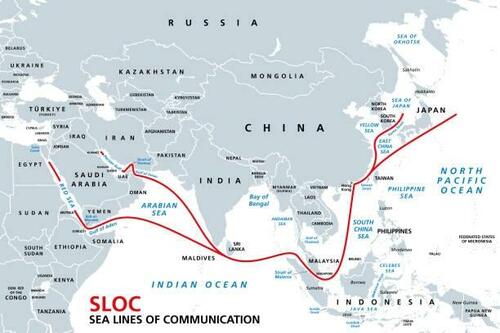
The fact is, if Washington had not foolishly placed warships in harms’ way in the Red Sea, monitoring the doings of the Houthi would be of such trivial relevance to the homeland security of America as to be assignable to a small staff of White House interns jabbering on Slack. There would be no need for secrecy at all, and even the CNN “war correspondents” wouldn’t much care.
In the section below, we will therefore address what Washington’s idiotic war on the Houthi is really about, but suffice it here to remind that US homeland security has nothing to do with the Red Sea or the navigation routes depicted in the graphic above.
To the contrary, it’s narrowly and precisely about two things and two things only.
- prevention of nuclear attack or blackmail.
- repelling a conventional military invasion and occupation of US territory.
Neither are even remotely possible at present by any power on planet earth. And when it comes to the Houthis and their Iranian backers, any potential threat doesn’t even register on the richter scale of national security.
Moreover, assurance of that impossibility does not require aircraft carriers or military bases strung around the planet. Nor American servicemen positioned in harm’s way for no good reason of homeland security, as are the US warships plying the Red Sea today.
As to nuclear blackmail, there is no nation on earth that has anything close to the First Strike force that would be needed to totally overwhelm America’s triad nuclear deterrent force, and thereby avoid a retaliatory annihilation of its own country and people. After all, the US has 3,800 active nuclear warheads and they are spread under the sea, in hardened silos and among a bomber fleet of 66 B-2 and B-52s—all beyond the detection or reach of any other nuclear power.
For instance, the Ohio class nuclear submarines each have 20 missile tubes, with each missile carrying an average of four warheads. That’s 80 independently targetable warheads per boat and at any given time 12 of the 14 Ohio class nuclear subs are actively deployed, and spread around the planet’s ocean bottoms within a firing range of 4,000 miles. So that’s 960 deep-sea nuclear warheads to find and neutralize before any would be blackmailer even gets started.
And then there are the roughly 1,200 nukes aboard the 66 strategic bombers, which also are not sitting on a single airfield Pearl Harbor style waiting to be obliterated, but are constantly rotating in the air and on the move. Likewise, the 400 minutemen missiles are spread out in extremely hardened silos deep underground.
Needless to say, there is no way, shape or form that America’s nuclear deterrent can be neutralized by a blackmailer. And the best thing is that the nuclear triad costs only $75 billion per year to maintain, including allowances for periodic upgrades, and needs no foreign bases or launch pads, at all.
At the end of the day, the only other potential military threat to the homeland security of America is invasion by a massive conventional armada of land, air and sea-based forces many, many times larger than the military behemoth that is now funded by Washington’s $950 billion defense budget. The logistical infrastructure that would be needed to control the vast Atlantic and Pacific Ocean moats surrounding North America and to sustain an invasion and occupation force on the North American continent is so mind-mindbogglingly vast as to be scarcely imaginable.
At the least, it would take a $50 trillion GDP to support such a thing—or obviously far more than the mere $2 trillion GDP of Russia or even the $18 trillion GDP of the Red Ponzi in China. So, most surely, the microscopic sliver of GDP under Houthi control ($7 billion) is an utter joke in the scheme of things.
Moreover, it’s not as if in an age when the sky is flush with high tech surveillance assets that such a massive conventional force armada could be secretly built, tested and mustered for surprise attack without being noticed in Washington. There can be no repeat of the Akagi, Kaga, Sōryū, Hiryū, Shōkaku, and Zuikaku strike force steaming across the Pacific toward Pearl Harbor sight unseen.
As a practical matter, Russia has only one aircraft carrier and China has just three— two of which are refurbished rust buckets purchased from the remnants of the old Soviet Union, and which carriers do not even have modern catapults for launching their strike aircraft.
Likewise, neocon knuckleheads have been jabbering about China’s growing Navy, which numbers 400 hulls compared to 305 ships in the US Navy’s fleet. But what they don’t say is that most of these Chinese units are coastal patrol boats, which likely couldn’t even make it to the coast of California, anyway.
In terms of Naval power projection capability, the proper measure of lethality is not the number of hulls, but the total displacement tonnage. In this connection, the US Navy has 4.6 million tons of displacement, averaging 15,000 tons per ship. By contrast, China’s Navy has but 2.0 million tons of displacement, averaging only 5,000 tons per boat. That is to say, the Chinese Navy is totally visible, assessable and trackable, and is not remotely of the size and lethality that would make an invasion of America remotely plausible.
In other words, all of today’s Uniparty prattle about maintaining freedom of navigation in the Red Sea, Persian Gulf, Straits of Taiwan and Malacca and many more makes sense only through the false lens of a Washington-based Global Hegemon.
Indeed, for those in the Trump entourage who think Washington is obliged to keep the peace everywhere on the planet and safeguard all the sea lanes and all the air space from quarreling local parties, as per the prior professions of Little Marco Rubio and national security advisor Walz, let them advise the Donald to call a special session of Congress to declare yet another war on Yemen, as did the hapless Woodrow Wilson in April 1917 to no avail except the resulting rise of Hitler, Stalin, World War II, the holocaust and the Cold War.
But the truth is, Washington has been launching not very secret bombing raids on the Houthi for months because it has waded yet again into the long-running spat between Israel and its Arab and Islamic neighbors. Yet as unfortunate as that may be for the inhabitants of Gaza, the West Bank and Israel itself, it does not threaten either the peace or even the commerce of the globe. If it did, then the most immediately impacted parties would be the heaviest shippers and neighbors on the Red Sea.
For instance, Saudi Arabia lives on the Red Sea, with major ports at Jeddah, Yanbu, Jubail and the massive futuristic investment at Neom. Likewise, China sends more containership cargo through the Red Sea by far than any other nation. And, of course, Egypt collects the tolls from the Suez Canel through which the Red Sea traffic transits.
So, has Saudi Arabia, China or Egypt joined Washington’s one-nation “coalition” to bomb the daylights out of the Houthi?
No, they haven’t!
But what is especially rich is all the handwringing from the Washington neocons about the 9% of global seaborne oil traffic that traverses the Red Sea/Suez route. The fact is, however, the US is now a net energy exporter. So higher oil prices would actually be a slight benefit economically.
But actually, despite the latest kerfuffle over the Houthi interdiction of Red Sea traffic, there has been no visible impact on global oil prices since October 7, 2023, even if you make use of a magnifying glass. So what in the hell, exactly, are they talking about?
Daily Price Of Brent Crude Since October 2021
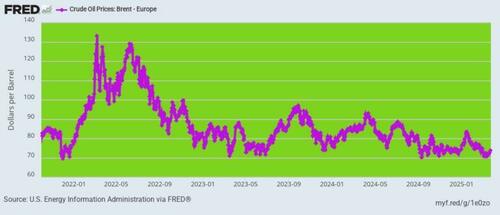
Yes, until Israel comes to terms with its neighbors, seaborne traffic from China and the Far East may be diverted into the longer route from Asia around the Cape of Hope. But so what?
The distance from Shanghai to Rotterdam through the Red Sea is just under 6,000 miles versus 9,400 miles around the Cape. That adds another third to the trip, but all the bleating from Washington about the extra costs is really too much—just 12% on traffic to the USA as we indicated above.
The fact is, the minor Houthi disruption of commercial traffic on the Red Sea is just one more reminder of why the US doesn’t need any of its 700 global bases, nor 100,000 military personal in Europe and roughly 100,000 in Korea, Japan and elsewhere in Asia, as well. And most especially it does not need aircraft carriers in the Red Sea, the Mediterranean Sea and the Persian Gulf—nor 50,000 American troops in Syria, Iraq. Kuwait, Bahrain etc.
These latter forces depicted below (sans Afghanistan), in fact, are all sitting ducks in harms’ way, waiting to get caught in the crossfire of local Shiite/Sunni conflicts or Israel’s perpetual conflict with its Arab and Muslim neighbors in the region. Yet all these forces would do exactly nothing to deter nuclear blackmailers or global armadas heading for the New Jersey shores, if such existed, which they do not.
And, no, there is not a sinister monster state in Iran behind all of the commotion, either. Iran poses zero threat to America’s homeland security. Period. It has no missiles capable of reaching the US and has no nukes at all, and would never get any had Trump not cancelled the 2015 nuclear agreement that Tehran was fully complying with.
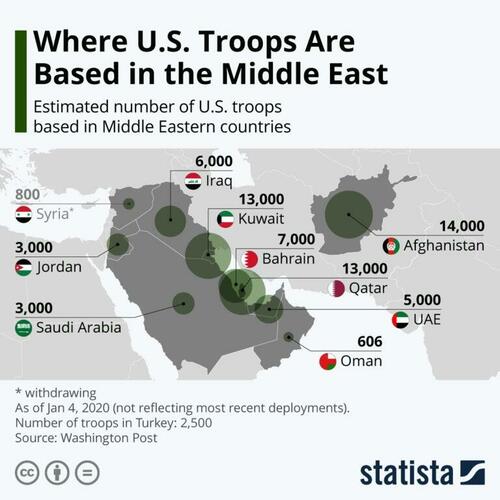
The fact is, even though all of these bases and US naval forces in the middle east region are of no benefit whatsoever to America’s homeland security, they are also actually a profound disservice to the security of Israel, as well. That is to say, just as in the case of loud-mouth adventurists in the Baltics and Poland, who poke the Russian Bear because the NATO Article 5 mutual defense commitment putatively has their back, Israel’s rightwing politicians operate on the same perverse incentives.
Owing to the US military shield, which is once again on display in the pointless bombings of the Houthi, Israel’s right-wing religious fanatics led by Bibbi Netanyahu continue to sabotage a two-state diplomatic solution and, instead, make war on their encircled enemies to the bitter end. And they are enabled to do so without leveling with the Israeli electorate about the true implications of going it alone as a Warfare State.
Thus, in the case of the Hamas matter currently at hand, if Israel wanted to safely and permanently incarcerate the Gaza strip and its 2.1 million population in an open-air prison, then it needed not only the Iron Dome to protect its population against Hamas’ primitive rockets, but also a full-time garrison along the border to putdown any breach of the Wall, and thereby preempt anything remotely like the catastrophe of October 7th.
To put a fine point to it, the Gaza strip is 25 miles long or 131,000 feet. If you put one IDF soldier every 6 feet, that’s a 22,000-man requirement. And on a 24/7 four shift basis that’s 88,000 troops in total at an average cost of $40,000 per soldier plus $20,000 for the overhead and generals. Overall, we are talking $5 billion of incremental military expense to make the Gaza prison break-proof, which amounts to about 1% of Israel’s $550 billion GDP.
All along, that’s been part of the unacknowledged incremental cost of the Garrison State alternative to a two-state settlement. It would have meant appreciably higher taxes on Israel’s citizen, but the bloody and barbaric breach by Hamas fighters on October 7th would have never happened, either.
In truth, however, Israel never even considered tightening its own economic belt to pay for the war policy that its militaristic and religious extremist government insisted upon. Netanyahu ceaselessly campaigned for decades implicitly on behalf of a Garrison State national security policy, but one funded on the cheap via a quasi-pacifist defense spending level.
That’s right. Israel’s military expenditures had plunged from more than 20% of GDP at the time of the last existential crisis during the Yom Kippur War of 1973 to just 5% of GDP on the eve of the October 7 attacks. In effect, Netanyahu falsely told Israeli voters that they didn’t have to take the risks and make the territorial concessions implicit in a two-state and diplomatically-based solution to the Palestine problem. But at the same time, they could also avoid having to be taxed to the gills to pay for the alternative—a costly, heavily militarized Garrison State.
The wink and nod underlying this false solution, of course, was a pitiless willingness to keep Hamas in check by “mowing the grass” every few years in Gaza, as a desperate Israeli government has done once again to the horror of much of the civilized world.
So even more than the failure of Israel’s vaunted intelligence operations in the run-up to the October 7th massacres, the real deep policy failure is the flaccid blue line in the chart below, slouching toward 5.0% of GDP defense spending after the Netanyahu coalition came to dominate policy in the 1990s.
You simply can’t have a Garrison State policy—no negotiations with the Palestinians, no two-state solution, no continuation of the Oslo or other international negotiations process and the quarantine of 2.1 million largely destitute Palestinians in a congested dysfunctional strip of land cheek-by-jowl with the Mediterranean Sea—on a 5% of GDP war budget.
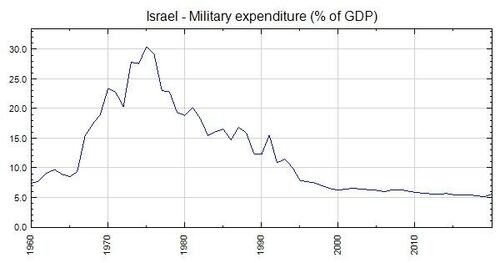
In short, Israel’s $25 billion defense budget is a pittance compared to its booming, technologically advanced and robust $550 billion national economy. The latter, in turn, is 20X larger than what had been the $28 billion that passes for an economy in the shambles of Gaza—a whisp of GDP mainly funded by foreign philanthropists and so-called malign actors in the region. And even that will soon virtually cease to exist.
Even if you count a few hundred million per year of aid from Iran and others that flows through Qatar to Hamas, there is simply no contest. Israel is an economic Goliath relative to the thin resources of the Hamas terrorist apparatus and does not need a US military shield in the region to ensure its survival. It just needs a government that will tell voters the truth about the real cost of the Netanyahu policy of perpetual war.
Needless to say, Bibi Netanyahu and his coalition of rightwing religious parties would have likely never stayed in power with their “rejectionist front” policy against an internationally brokered and superintended two-state arrangement had they leveled with the public about the immense increase in military spending and taxes these policies required.
But even that is not the half of it. The truth is, Netanyahu is a megalomaniacal madman who has had the reckless audacity to pursue an utterly dangerous Machiavellian strategy of promoting and funding Hamas in order to kill dead as a doornail any prospect whatever of a two-state arrangement.
The public record makes absolutely clear that this is what Netanyahu has done, even as he failed to tell the Israel’s public that this policy, in turn, necessitated a full-bodied Garrison State with painful tax increases to keep his Frankenstein monster contained inside the Gaza prison walls.
Israel Tax Revenue As % Of GDP, 1995 to 2021
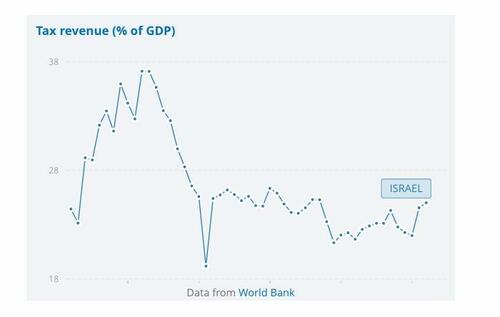
For want of doubt, the facts are these. Between 2012 and 2018 Netanyahu gave Qatar approval to transfer a cumulative sum of nearly one billion dollars to Gaza in the form of suitcases full of cash. And at least half of that is estimated to have reached Hamas, including its military wing.
According to the Jerusalem Post,
……in a private meeting with members of his Likud party on March 11, 2019, Netanyahu explained the reckless step as follows: The money transfer is part of the strategy to divide the Palestinians in Gaza and the West Bank. Anyone who opposes the establishment of a Palestinian state needs to support the transfer of the money from Qatar to Hamas. In that way, we will foil the establishment of a Palestinian state (as reported in former cabinet member Haim Ramon’s Hebrew-language book “Neged Haruach”, p. 417).
In an interview with the Ynet news website on May 5, 2019, Netanyahu associate Gershon Hacohen, a major general in reserves, said, “We need to tell the truth. Netanyahu’s strategy is to prevent the option of two states, so he is turning Hamas into his closest partner. Openly Hamas is an enemy. Covertly, it’s an ally.”
Indeed, earlier that spring Netanyahu himself was widely quoted as saying during the aforementioned meeting of Likud MKs that,
“Whoever opposes a Palestinian state must support delivery of funds to Gaza (cash in suitcases from Qatar) because maintaining separation between the PA in the West Bank and Hamas in Gaza will prevent the establishment of a Palestinian state.”
So Israel’s governing faction of religious extremists, militarists, messianic settlers and Eretz Yisrael ideologues have chosen, instead, to live in a Garrison State and to be periodically compelled to “mow the grass” in the Gaza outdoor prison. Yet if its rightwing governments want to operate a modern-day Sparta, they need to tap their own taxpayers first.
In the meanwhile, the Donald and his minions need to truly sober up. Uncle Sam’s checking account is massively overdrawn. Now is not the time to fund wars which do nothing for America’s homeland security (Ukraine) or to perpetuate yet another war on behalf of an “ally” that is unwilling to pay for the Garrison State its own blood-soaked, perpetual war policies require.
* * *
The amount of money the US government spends on foreign aid, wars, the so-called intelligence community, and other aspects of foreign policy is enormous and ever-growing. It’s an established trend in motion that is accelerating, and now approaching a breaking point. It could cause the most significant disaster since the 1930s. Most people won’t be prepared for what’s coming. That’s precisely why bestselling author Doug Casey and his team just released an urgent video with all the details. Click here to watch it now.
Views expressed in this article are opinions of the author and do not necessarily reflect the views of ZeroHedge.
Tyler Durden
Sun, 04/13/2025 - 19:40


 State Emergency Services of Ukraine
State Emergency Services of Ukraine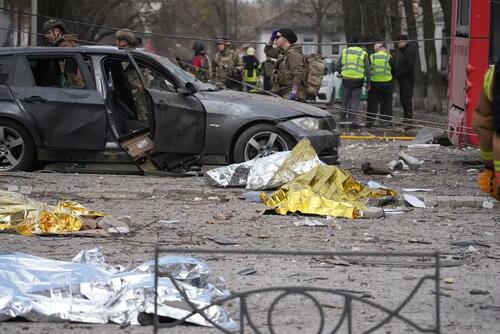 Via Reuters
Via Reuters
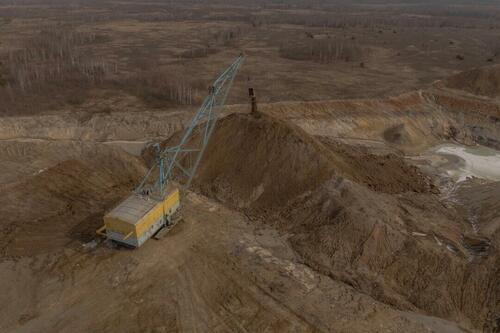 An aerial view shows a dragline excavator operating in an open-pit titanium mine in the Zhytomyr region, Ukraine, on Feb. 28, 2025. Roman Pilipey/AFP via Getty Images
An aerial view shows a dragline excavator operating in an open-pit titanium mine in the Zhytomyr region, Ukraine, on Feb. 28, 2025. Roman Pilipey/AFP via Getty Images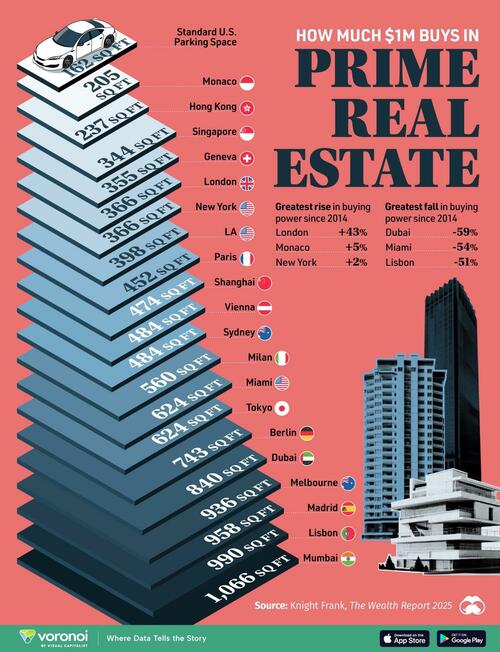
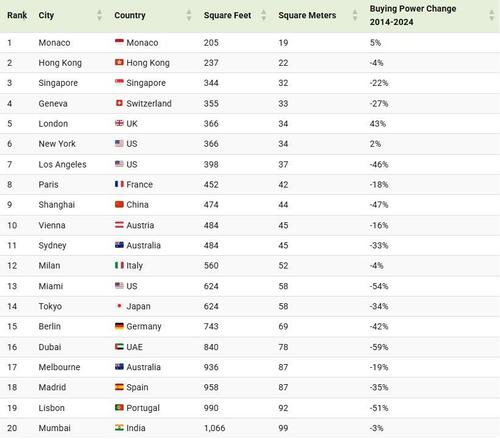
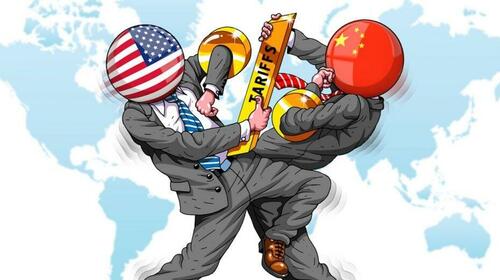
 President Richard Nixon addresses Congress to explain his new economic policy in 1971 © AP
President Richard Nixon addresses Congress to explain his new economic policy in 1971 © AP Click hat... add to cart... check out... receive awesome hat...
Click hat... add to cart... check out... receive awesome hat...
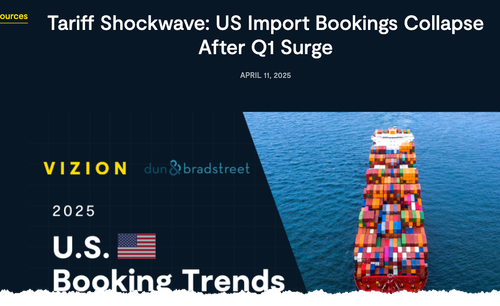
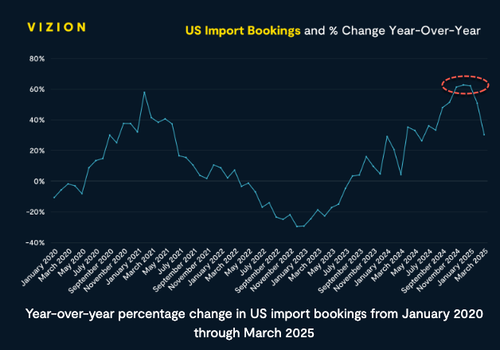
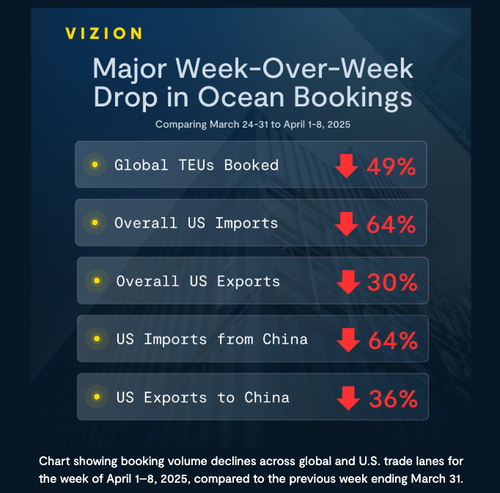
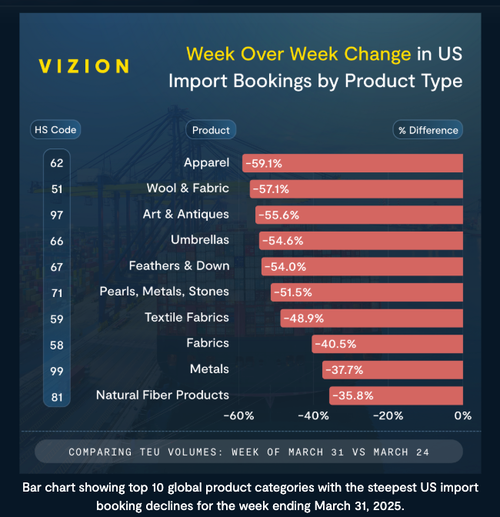
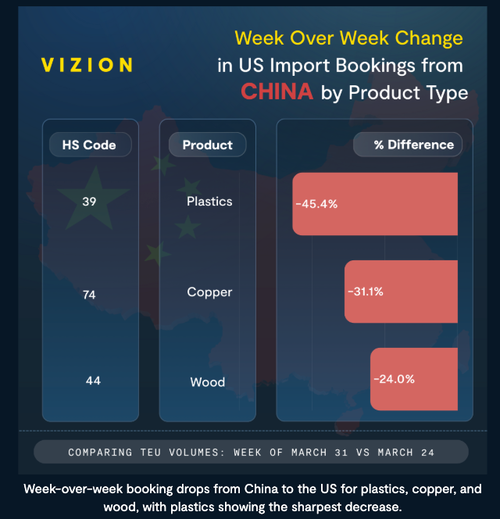









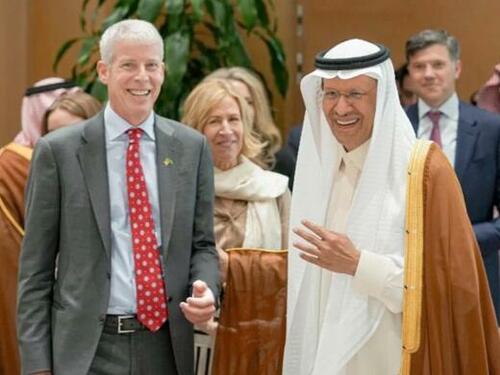 Saudi energy minister Prince Abdulaziz bin Salman met with US Secretary of Energy Chris Wright, SPA
Saudi energy minister Prince Abdulaziz bin Salman met with US Secretary of Energy Chris Wright, SPA Kilmar Abrego Garcia in a file photo. Abrego Garcia Family/Handout via Reuters
Kilmar Abrego Garcia in a file photo. Abrego Garcia Family/Handout via Reuters
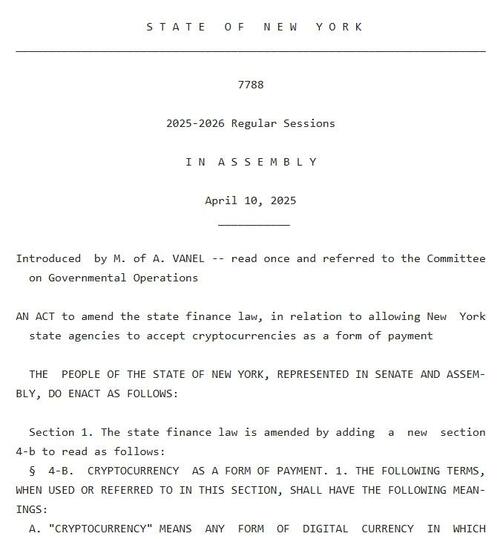




 Getty Images
Getty Images
Recent comments